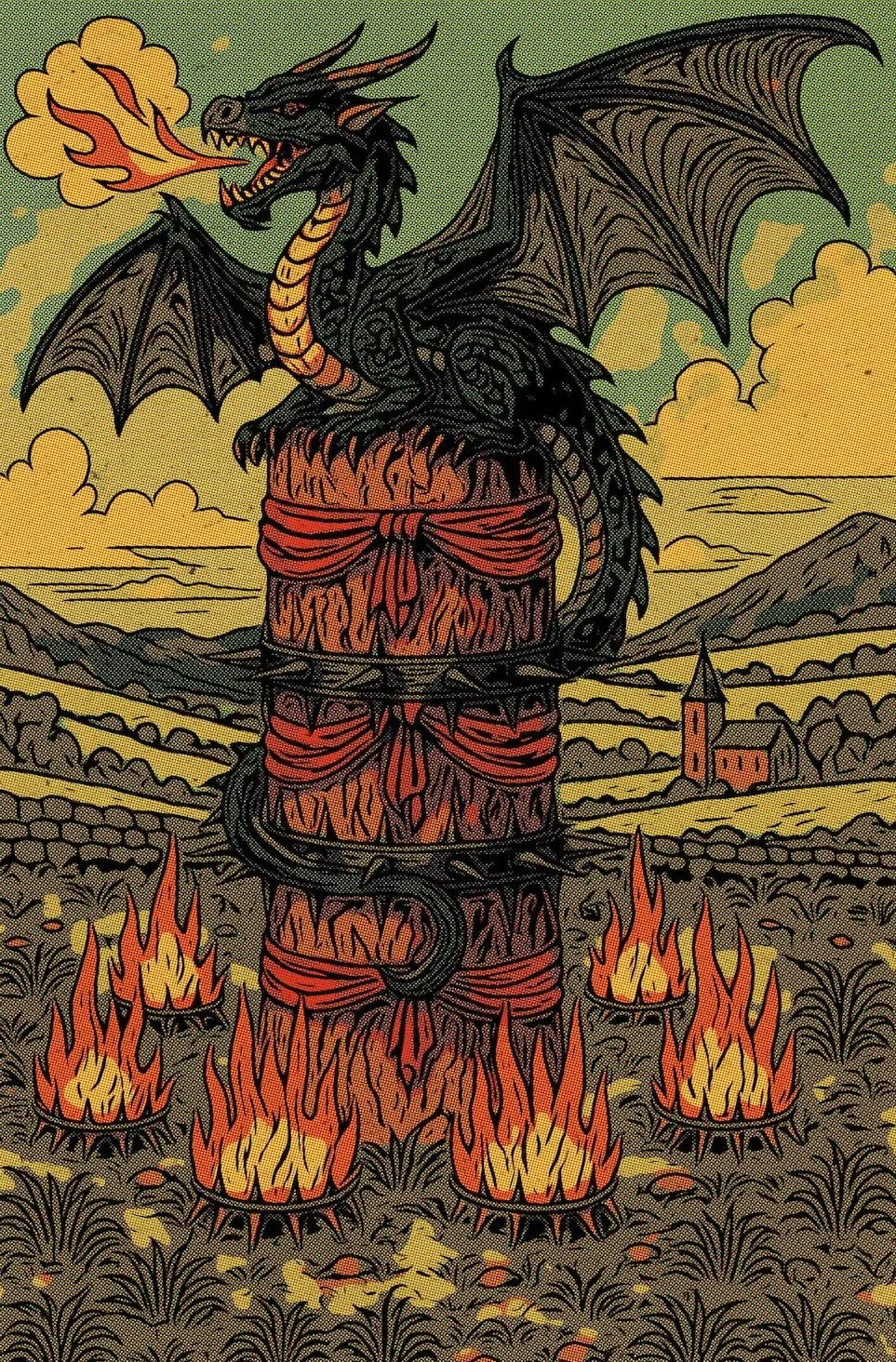Myths and Legends of the Tanat Valley…
Nestled between the Berwyn Mountains and the rolling hills of Montgomeryshire, the Tanat Valley is a landscape steeped in myth, mystery, and memory. From dragons and giants to fairies and saints, the valley’s folklore offers a glimpse into how ancient peoples interpreted the wild beauty around them.
🌿 The Patron Saint of Hares: Melangell of Pennant
One of the valley’s most enduring legends is that of Saint Melangell, a 7th-century Irish princess who fled to Wales to escape an arranged marriage. She found sanctuary in the secluded Cwm Pennant, where she lived a hermit’s life among the wildlife. The story goes that Prince Brochwel Ysgithrog, while hunting, chased a hare into a thicket where Melangell was praying. The hare took refuge under her cloak, and the prince’s hounds refused to approach. Moved by her sanctity, the prince gifted her the valley to establish a nunnery — now the site of St Melangell’s Church, a place of pilgrimage for centuries.
Even today, it’s said that if a hare is pursued and someone cries, “God and Melangell be with thee,” the creature will escape unharmed.
🪨 Giants of the Berwyns
The valley’s dramatic topography inspired tales of Cawr Berwyn, a giant said to roam the high passes of Cwm Blowty and Cwm Pennant. Local lore tells of three massive boulders at the foot of Pistyll Rhaeadr — hurled by the giant, his wife, and their maid as they crossed the waterfall. These stones are known as Baich y Cawr (Giant’s Burden), Baich y Gawres (Giantess’s Burden), and Ffedogaid y Forwyn (Maid’s Apronful) A.
Another tale claims the giant leapt from Moel Dimoel, leaving a spring where his heel struck the earth — a poetic explanation for the valley’s natural springs.
🧚 Fairy Topography and Haunted Places
Craig Rhiwarth, with its Iron Age hillfort, is said to be haunted by mischievous fairies. Locals once believed the site should be “avoided at all costs,” and some even spoke of a fairy topography — places where the veil between worlds was thin A. These beliefs echo broader Celtic traditions, where fairies were tied to specific stones, streams, and groves.
🐍 Dragons and Serpents
The standing stone at Maes Mochnant, known as Post y Wiber (Serpent’s Post), was said to have been raised to stop a dragon ravaging the countryside. According to legend, the beast dashed itself against the stone and perished — a tale that blends myth with the valley’s Bronze Age funerary landscape.
🏴☠️ Brigands and Bandits
The Gwylliaid Cochion the Red Bandits of Dinas Mawddwy — were said to raid the Tanat Valley in the 15th and 16th centuries. A flat stone called Bwrdd y Gwylliad Cochion (Table of the Red Bandits) near Cwm Llêch was believed to conceal treasure. Grooves on nearby boulders were thought to be where the brigands sharpened their swords A.
For more information on the legends of the Tanat Valley click here.
✨ Why These Legends Matter
These stories aren’t just quaint relics — they’re cultural fossils, shaped by the valley’s geology, ecology, and human history. They reflect how people once made sense of their surroundings, and they continue to inspire awe and imagination today.
If you’re walking the Tanat Valley’s trails, keep an eye out for the hare, the giant’s stones, or the whisper of wings at Craig Rhiwarth.
